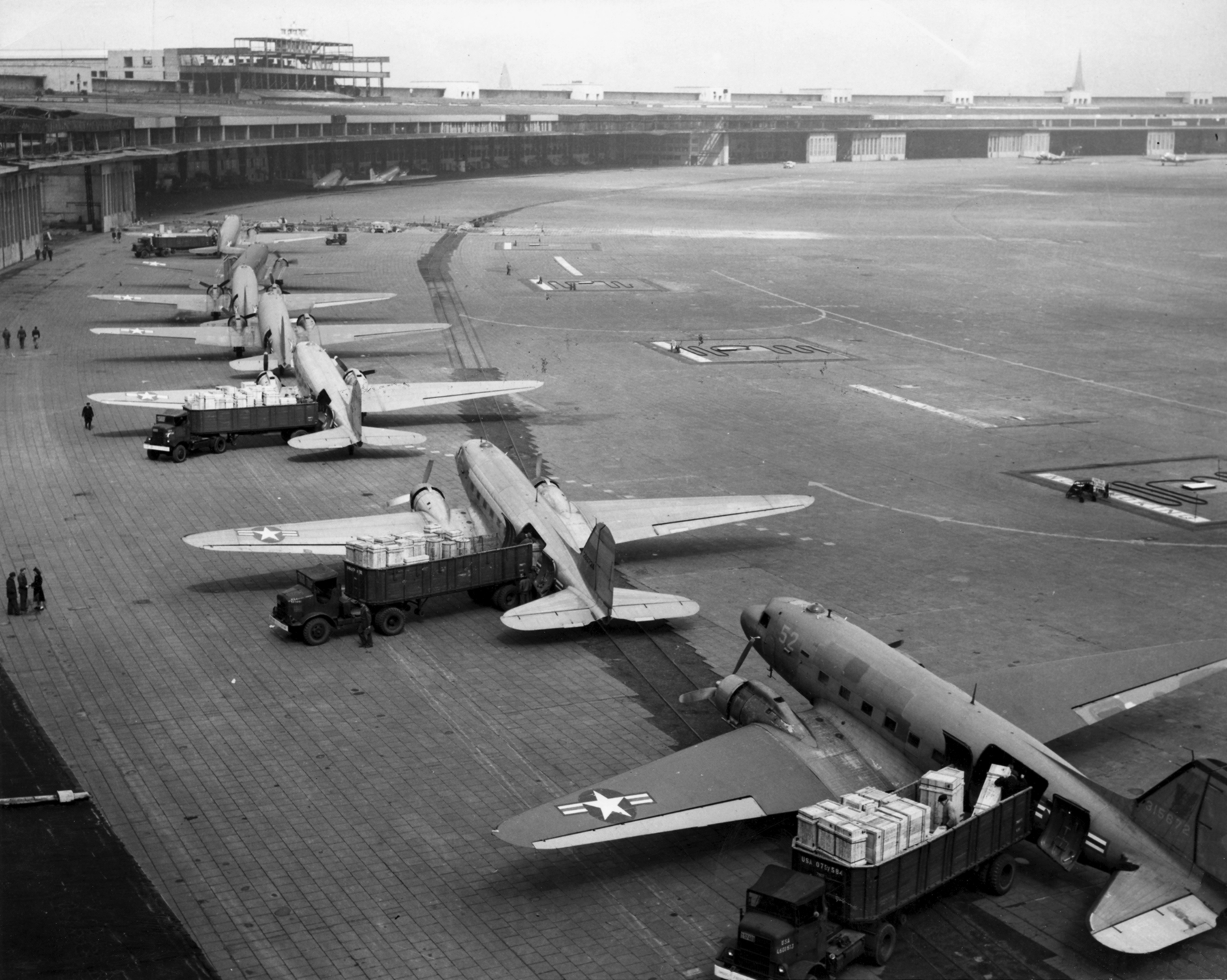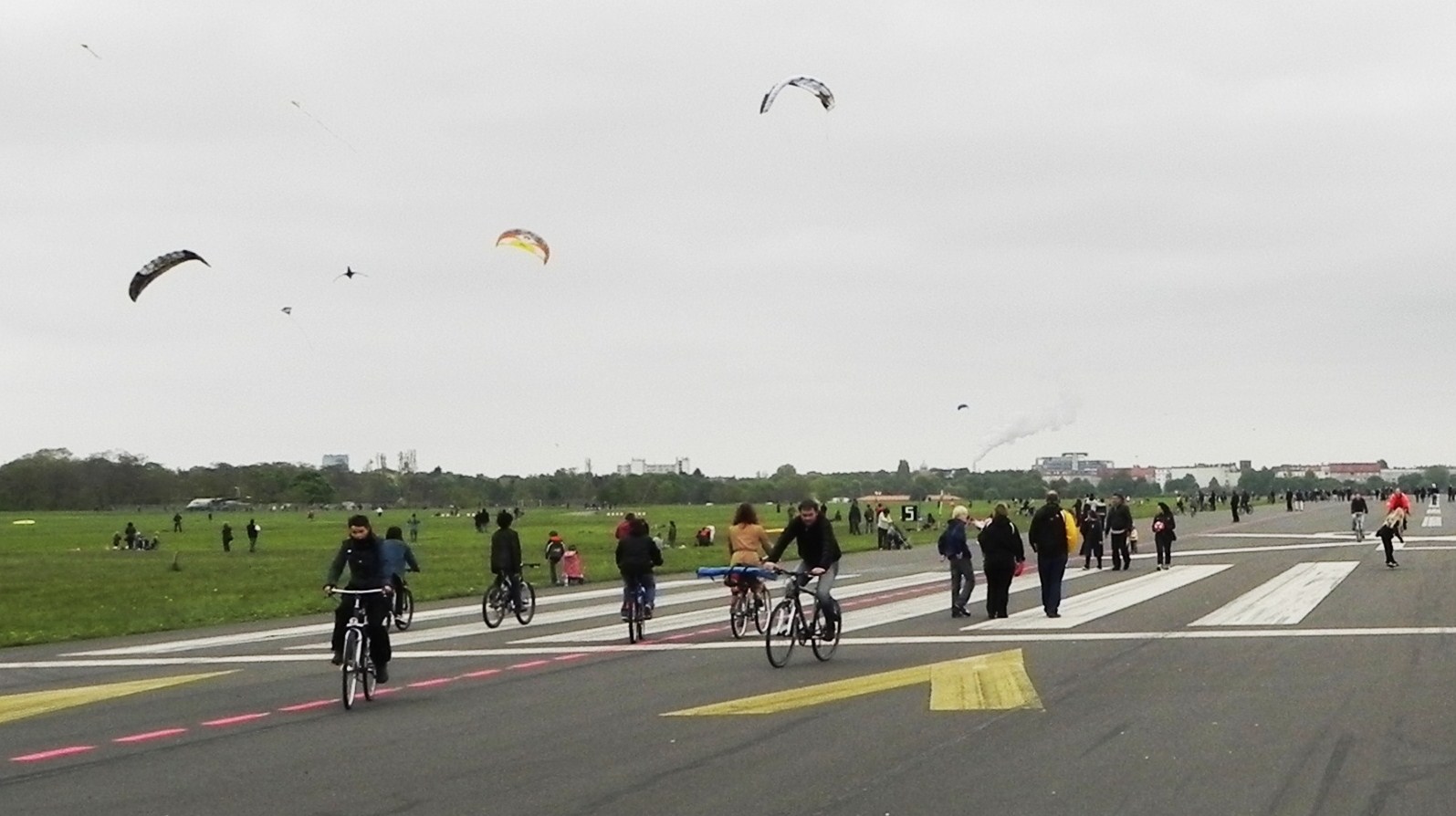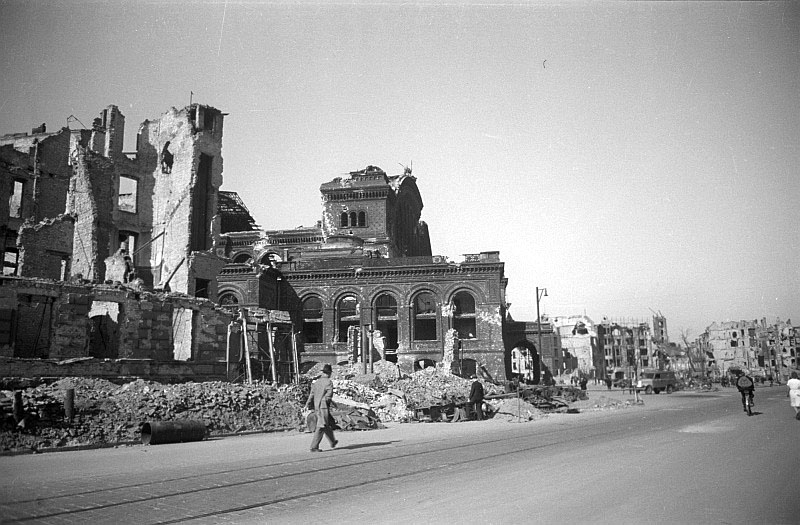|
Tempelhof
Tempelhof () is a locality of Berlin within the borough of Tempelhof-Schöneberg. It is the location of the former Tempelhof Airport, one of the earliest commercial airports in the world. The former airport and surroundings are now a park called Tempelhofer Feld, making it the largest inner city open space in the world. The Tempelhof locality is located in the south-central part of the city. Before Berlin's 2001 administrative reform, the area of Tempelhof, together with the localities of Mariendorf, Marienfelde, and Lichtenrade, constituted a borough of its own, also called ''Tempelhof''. These localities grew from historic villages on the Teltow plateau founded in the early 13th century in the course of the German Ostsiedlung. History ''Tempelhove'' was first mentioned in a 1247 deed issued at the Walkenried Abbey as a ''Komturhof'' (''commander's court'', the smallest holding entity of a military order) of the Knights Templar, whose leadership and many fellow kni ... [...More Info...] [...Related Items...] OR: [Wikipedia] [Google] [Baidu] |
Berlin Tempelhof Airport
Berlin Tempelhof Airport () was one of the first airports in Berlin, Germany. Situated in the south-central Berlin borough of Tempelhof-Schöneberg, the airport ceased operating in 2008 amid controversy, leaving Tegel and Schönefeld as the two main airports serving the city for another twelve years until both were replaced by Berlin Brandenburg Airport in 2020. Tempelhof was designated as an airport by the Reich Ministry of Transport on 8 October 1923. The old terminal was originally constructed in 1927. In anticipation of increasing air traffic, the Nazi government began an enormous reconstruction in the mid-1930s. While it was occasionally cited as the world's oldest operating commercial airport, the title was disputed by several other airports, and is no longer an issue since its closure. Tempelhof was one of Europe's three iconic pre-World War II airports, the others being London's now defunct Croydon Airport and the old Paris–Le Bourget Airport. It acquired a furth ... [...More Info...] [...Related Items...] OR: [Wikipedia] [Google] [Baidu] |
Tempelhofer Feld
Tempelhofer Feld (English language, English: Tempelhof Field) historically was an area in Berlin used for military practice, and as a parade ground of the Berlin garrison. It belonged to the Tempelhofer uplands on the Teltow plateau, in the south of Berlin. Tempelhofer Feld is closely linked to German military and aviation history, as well as German football history. Today it is a developed area, with the exception of the Tempelhofer Feld park on the site of the former Tempelhof Airport. History Use as a parade ground The field located between the towns of Schöneberg and Tempelhof, then also known as ''Großes Feld (Great Field)'', was used by Schöneberg farmers as Field (agriculture), farmland until the 18th century. Under Frederick William I of Prussia, Frederick William I, it was also used as a military parade and Military exercise, drill ground from 1722 onwards, as well as a maneuvering area for the Prussian army. On August 2, 1881, the Hawaiian king Kalākaua was a gu ... [...More Info...] [...Related Items...] OR: [Wikipedia] [Google] [Baidu] |
Tempelhof Village Church
Tempelhof () is a locality of Berlin within the borough of Tempelhof-Schöneberg. It is the location of the former Tempelhof Airport, one of the earliest commercial airports in the world. The former airport and surroundings are now a park called Tempelhofer Feld, making it the largest inner city open space in the world. The Tempelhof locality is located in the south-central part of the city. Before Berlin's 2001 administrative reform, the area of Tempelhof, together with the localities of Mariendorf, Marienfelde, and Lichtenrade, constituted a borough of its own, also called ''Tempelhof''. These localities grew from historic villages on the Teltow plateau founded in the early 13th century in the course of the German Ostsiedlung. History ''Tempelhove'' was first mentioned in a 1247 deed issued at the Walkenried Abbey as a ''Komturhof'' (''commander's court'', the smallest holding entity of a military order) of the Knights Templar, whose leadership and many fellow knights had be ... [...More Info...] [...Related Items...] OR: [Wikipedia] [Google] [Baidu] |
Tempelhof-Schöneberg
Tempelhof-Schöneberg () is the seventh borough of Berlin, formed in 2001 by merging the former boroughs of Tempelhof and Schöneberg. Situated in the south of the city it shares borders with the boroughs of Mitte and Friedrichshain-Kreuzberg in the north, Charlottenburg-Wilmersdorf and Steglitz-Zehlendorf in the west as well as Neukölln in the east. Subdivision Tempelhof-Schöneberg consists of six localities as from north to south: * Schöneberg * Friedenau * Tempelhof * Mariendorf * Marienfelde * Lichtenrade Demographics As of 2010, the borough had a population of 335,060, of whom about 105,000 (31%) were of non-German origin. The largest ethnic minorities were Turks constituting 7% of the population; Poles at 4%; Yugoslavians at 3%; Arabs at 2.5%; Afro-Germans at 1.5% and Russians at 1.3%. Politics Borough assembly The governing body of Tempelhof-Schöneberg is the borough assembly (''Bezirksverordnetenversammlung''). It has responsibility for passing laws and ... [...More Info...] [...Related Items...] OR: [Wikipedia] [Google] [Baidu] |
Berlin's 2001 Administrative Reform
Berlin is divided into boroughs or administrative districts (). In Berlin, the term is officially shortened to (districts). The boroughs are further divided into quarters (). These smaller localities are officially recognised, but have no administrative bodies of their own. Quarters and many of their subunits, the neighborhoods (), typically have strong identities that sometimes predate their inclusion into the modern boundaries of Berlin. Both the boroughs and the quarters function differently to other subdivisions in Germany due to Berlin's dual status as an independent city () as well as a federated state of Germany () in its own right. Since 2001, Berlin has been made up of twelve boroughs, each with its own administrative body. However, because Berlin is a single municipality (), its boroughs have limited power, acting only as agencies of Berlin's state and city governments as laid out in the Greater Berlin Act of 1920. The boroughs are financially dependent on state donati ... [...More Info...] [...Related Items...] OR: [Wikipedia] [Google] [Baidu] |
Mariendorf
Mariendorf () is a locality in the southern Tempelhof-Schöneberg borough of Berlin. Geography Mariendorf is situated between the localities of Tempelhof in the north and Marienfelde and Lichtenrade in the south. To the west it shares a border with the Lankwitz locality of Steglitz-Zehlendorf, to the east with Britz and Buckow, parts of the borough of Neukölln. History Mariendorf was mentioned for the first time in a document of 1348, when it was held by the Bailiwick of Brandenburg of the Order of Saint John (the ''Johanniterorden''). The ''Johanniter'' sold Mariendorf, together with Tempelhof and Marienfelde, to the city of Berlin and Coelln in 1435. In 1800, Mariendorf had 162 inhabitants. Beginning in 1872, a ''Villenkolonie'' ("mansion colony") was developed in the south end of Mariendorf, and by 1900 the village had 5,764 inhabitants. The ''Trabrennbahn'' (harness racing track) opened in 1913, and in 1920 Mariendorf became formally amalgamated into the greater c ... [...More Info...] [...Related Items...] OR: [Wikipedia] [Google] [Baidu] |
Marienfelde
Marienfelde () is a locality in southwest Berlin, Germany, part of the Tempelhof-Schöneberg borough. The former village, incorporated according to the Greater Berlin Act of 1920, today is a mixed industrial and residential area. Geography The Marienfelde quarter borders the Tempelhof-Schöneberg localities of Mariendorf in the northeast and Lichtenrade in the southeast. In the west, it borders on Lankwitz, part of the Steglitz-Zehlendorf borough. In the south, it is bounded by the Berlin city limits and the border with the state of Brandenburg. History The medieval '' Angerdorf'' arose together with neighbouring Mariendorf during the German '' Ostkolonisation'' migration about 1220 AD, then affiliated with the Teltow estates held by the Knights Templar commandry at Tempelhof. A fieldstone church was erected around 1240 which, still preserved, is one of the oldest in the Berlin area. The settlement of ''Merghenvelde'' itself was first mentioned in a 1344 deed, after th ... [...More Info...] [...Related Items...] OR: [Wikipedia] [Google] [Baidu] |
Teltow Plateau
Teltow () is both a geological plateau and also a historical region in the German states of Brandenburg and Berlin. As an historical region, the Teltow was one of the eight territories out of which the March of Brandenburg was formed in the 12th and 13th centuries. As a result of the (1239–1245) the question of territorial lordship of the newly created heart of the expanding march was finally decided here. Between 1835 and 1952 there was also a county, ; in addition a town immediately south of Berlin, in the present-day county of Potsdam-Mittelmark, bears the name Teltow. Geography and geology Boundary The Teltow is not a unified region, either from a historical or a landscape perspective. The present-day term is defined by an ice age plateau that consists mainly of ground moraine elements. Its natural northern border is defined by the range of the Tempelhofer Berge, among them the Kreuzberg rising to , along the southern bank of the Spree. To the east the borders are ... [...More Info...] [...Related Items...] OR: [Wikipedia] [Google] [Baidu] |
Lichtenrade
Lichtenrade () is a German locality (''Ortsteil'') within the borough (''Bezirk'') of Tempelhof-Schöneberg, Berlin. Until 2001 it was part of the former borough of Tempelhof. History The locality was first mentioned in 1375, named ''Lichtenrode''. Autonomous Prussian municipality of the former Teltow district, Lichtenrade was incorporated into Berlin in 1920, with the "Greater Berlin Act". During World War II, a branch of the Sachsenhausen concentration camp was located in this locality. After 1941, prisoners of war from Ukraine were interned in the camp. During the Cold War it was a part of West Berlin bordering with East Germany. Its long boundary with Brandenburg was surrounded by the Berlin Wall from 1961 to 1989. Geography Located in the southern suburb of Berlin, it is one of the southernmost areas of the city, largely bounded by the Brandenburger municipalities of Schönefeld (Dahme-Spreewald district), Blankenfelde-Mahlow and Großbeeren (both in Teltow-Fläming distr ... [...More Info...] [...Related Items...] OR: [Wikipedia] [Google] [Baidu] |
Berlin
Berlin ( ; ) is the Capital of Germany, capital and largest city of Germany, by both area and List of cities in Germany by population, population. With 3.7 million inhabitants, it has the List of cities in the European Union by population within city limits, highest population within its city limits of any city in the European Union. The city is also one of the states of Germany, being the List of German states by area, third smallest state in the country by area. Berlin is surrounded by the state of Brandenburg, and Brandenburg's capital Potsdam is nearby. The urban area of Berlin has a population of over 4.6 million and is therefore the most populous urban area in Germany. The Berlin/Brandenburg Metropolitan Region, Berlin-Brandenburg capital region has around 6.2 million inhabitants and is Germany's second-largest metropolitan region after the Rhine-Ruhr region, as well as the List of EU metropolitan areas by GDP, fifth-biggest metropolitan region by GDP in the European Union. ... [...More Info...] [...Related Items...] OR: [Wikipedia] [Google] [Baidu] |
Kreuzberg
Kreuzberg () is a district of Berlin, Germany. It is part of the Friedrichshain-Kreuzberg borough located south of Berlin-Mitte, Mitte. During the Cold War era, it was one of the poorest areas of West Berlin, but since German reunification in 1990, it has undergone significant gentrification and is now known for its vibrant arts scene. The borough is known for its large percentage of immigrants and descendants of immigrants, many of whom are of Turks in Germany, Turkish ancestry. This influx began in the 1960s and 1970s when West Germany invited 'Gastarbeiter' (guest workers) from various countries, including Turkey, Italy, Greece, and Yugoslavia, to address labour shortages and aid in Reconstruction of Germany, post-war reconstruction. As of 2006, 31.6% of Kreuzberg's inhabitants did not have German citizenship. Kreuzberg is known for its diverse cultural life and experimental alternative lifestyles, making it an attractive area for many. However, some parts of the district ar ... [...More Info...] [...Related Items...] OR: [Wikipedia] [Google] [Baidu] |
Ullstein Verlag
The ''Ullstein Verlag'' was founded by Leopold Ullstein in 1877 at Berlin and is one of the largest publishing companies of Germany. It published newspapers like '' B.Z.'' and '' Berliner Morgenpost'' and books through its subsidiaries ''Ullstein Buchverlage'' and ''Propyläen''. History Founding to World War II On 14 July 1877, Leopold Ullstein purchased the ''Neue Berliner Tageblatt'' newspaper, a subsidiary of the liberal '' Berliner Tageblatt'' published by Rudolf Mosse, and on 1 January 1878 converted it into the '' Berliner Zeitung'' (''B.Z.''). In 1894 he also acquired the '' Berliner Illustrirte Zeitung'' weekly, which as technology advanced and permitted heavy use of photographs, became the most successful picture paper in Germany. The ''B.Z. am Mittag'', relaunched in 1904, became Germany's first tabloid newspaper. Ullstein's sons Rudolf, Hans, Louis, Franz and Hermann inherited the publishing house and developed it further. They acquired the reputable '' Vossisch ... [...More Info...] [...Related Items...] OR: [Wikipedia] [Google] [Baidu] |





